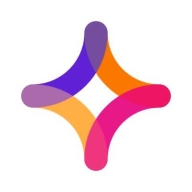

Jitterbit Harmony and Informatica Intelligent Cloud Services are competing in the integration solutions category. Informatica Intelligent Cloud Services offers advanced features, making it a superior choice for those looking for comprehensive integration capabilities.
Features: Jitterbit Harmony provides advanced API management, seamless connectivity, and user-friendly transformation tools. Its interface is known for ease of use, allowing for efficient data mapping and transformations. Informatica Intelligent Cloud Services offers robust data management and automation capabilities. It excels in handling large volumes of data, providing comprehensive integration features like master data management and cloud application integration.
Room for Improvement: Jitterbit Harmony could improve scalability for larger enterprise needs, enhance data governance features, and increase advanced automation options. Informatica Intelligent Cloud Services could focus on simplifying its complex deployment process, improving user interface intuitiveness, and reducing overall initial setup costs for better accessibility.
Ease of Deployment and Customer Service: Jitterbit Harmony is known for its straightforward deployment and responsive customer service, making it ideal for smaller projects. Informatica Intelligent Cloud Services requires a more complex deployment, catering to large enterprise environments, and provides extensive customer support resources to manage intricate setups.
Pricing and ROI: Jitterbit Harmony offers competitive pricing with favorable short-term ROI, appealing to budget-conscious businesses with flexible pricing models for smaller implementations. Informatica Intelligent Cloud Services has higher initial setup costs but provides long-term ROI through its comprehensive feature set and capabilities, which are attractive to larger enterprises seeking substantial integration solutions.
Leadership prefers to utilize third-party tools, such as Snowflake, which has both storage and ELT features.
We expect more responsive assistance because they have the expertise since Informatica is their tool, but I don't see enough expertise on the Informatica support side.
My impression of their support is positive, and everything is functioning well.
The scalability provided by Informatica is commendable.
There are many options available, and the licensing model is quite good, supporting our needs effectively.
We face issues with the API side, as Cloud Application Integration cannot handle large volumes; according to the API page, there is a limitation of 500 records or 500 MB.
If the development interface could be optimized to have fewer modules, it would be greatly beneficial.
Informatica Intelligent Cloud Services already integrates with AI platforms, we need to use these tools rigorously and check all these aspects, including machine learning and analytics.
Regarding pricing, compared to other tools I have worked with, Informatica offers competitive pricing, which I find not high in terms of starting strategy.
Informatica Intelligent Cloud Services is affordable for my specific use cases, with the pricing being rated three or four on a scale where one is very cheap.
The connectors serve as the main functionality, making data integration processes more efficient by saving time and effort.
Informatica Intelligent Cloud Services allows us to manage the entire data lifecycle in the insurance domain, supporting microservices architecture and leveraging AI and machine learning for data discovery, quality, and integration.
Informatica Intelligent Cloud Services can handle a really huge volume of data.
| Product | Market Share (%) |
|---|---|
| Informatica Intelligent Cloud Services | 1.1% |
| Jitterbit Harmony | 2.2% |
| Other | 96.7% |


| Company Size | Count |
|---|---|
| Small Business | 3 |
| Large Enterprise | 8 |
| Company Size | Count |
|---|---|
| Small Business | 8 |
| Midsize Enterprise | 3 |
| Large Enterprise | 1 |
Informatica Intelligent Cloud Services is a next generation iPaaS, which is made up of a growing number of data management products. The productivity of the environment is accelerated by a common user experience across all products, the AI/ML-driven intelligence of the CLAIRE™ engine, and a microservices architecture.
Jitterbit Harmony offers an advanced integration platform that simplifies data transformation, helps users quickly connect apps, and automates workflows, streamlining complex business processes efficiently.
Designed to meet the high demands of modern businesses, Jitterbit Harmony enables seamless integration across cloud and on-premise environments. By leveraging its powerful tools and user-friendly design, users can accelerate innovation, reduce operational costs, and enhance productivity. It bridges the gap between traditional and emerging technologies, ensuring organizations can adapt quickly to market changes and remain competitive.
What are the key features of Jitterbit Harmony?Jitterbit Harmony finds its application across numerous industries, from enhancing data integration in the healthcare sector to optimizing supply chain logistics in manufacturing. It supports financial institutions by improving transaction processing and facilitates real-time data connectivity in retail environments, making it a versatile choice for diverse industries looking to innovate rapidly.
We monitor all Integration Platform as a Service (iPaaS) reviews to prevent fraudulent reviews and keep review quality high. We do not post reviews by company employees or direct competitors. We validate each review for authenticity via cross-reference with LinkedIn, and personal follow-up with the reviewer when necessary.